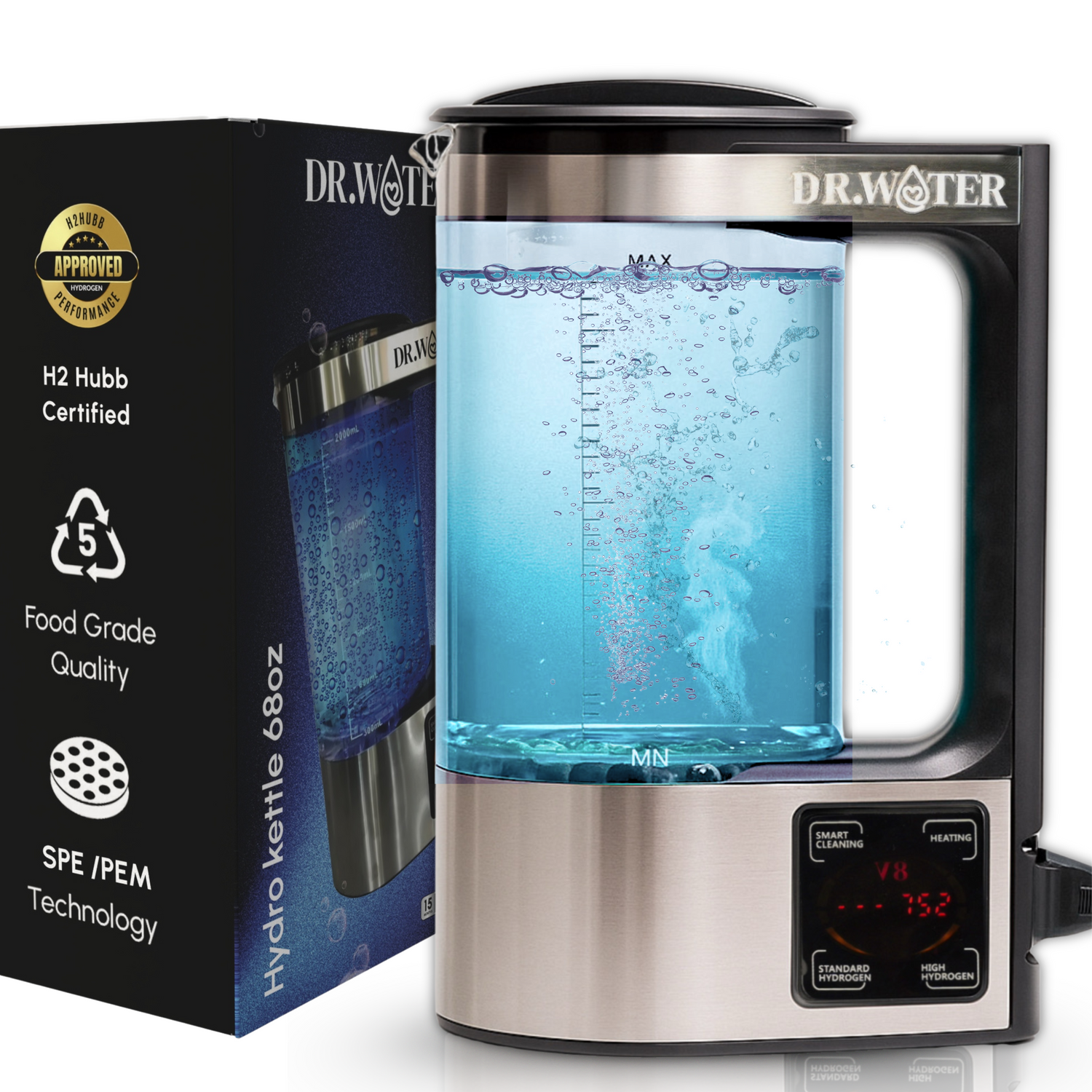Why Your Hydrogen Water Bottle Might Not Be Functioning Correctly
Share
Summary
|
Hydrogen water bottles are game-changers for people looking to upgrade their hydration habits. But like any electronic device, they can occasionally act up or not work the way you expect.
If you’re wondering how to know if your hydrogen water bottle is working, you’re definitely not alone. Let’s break it down and get you back to sipping clean, hydrogen-rich water.
Telltale Signs Your Hydrogen Water Bottle Isn’t Working Right
- No Visible Bubbles: One of the biggest visual cues of hydrogen production is a stream of tiny bubbles. If your water sits still during the hydrogenation cycle, your bottle probably isn’t generating hydrogen.
- Flat Taste: Hydrogen-enriched water tends to taste lighter or silkier. If your water tastes completely flat, it may not be generating enough hydrogen.
- Indicator Light Not Functioning: Many bottles have LED indicators to show they’re working. If the lights don’t turn on or blink irregularly, your bottle might be malfunctioning.
- Unusual Odor: A strange or metallic smell might mean that the electrodes are wearing down or that the bottle needs a deep clean.
- No Pressure Release: After the hydrogenation process, some bottles release a slight hiss when you open them. If that’s completely absent, the process may not be happening.
Figuring out what component is in trouble can help you find quicker solutions.
Common Reasons Why It Might Stop Working
- Dirty Electrodes: Over time, minerals from hard water can coat the electrode plates, reducing conductivity. This is one of the most common issues.
- Low Battery or Faulty Charging Cable: It sounds basic, but dead batteries or faulty USB cables are easy to overlook.
- Water Type: Some hydrogen bottles work best with purified or distilled water. Using tap water, especially hard water, can interfere with performance.
- Internal Damage or Corrosion: Dropping your bottle or letting it sit wet for long periods can corrode internal parts, especially if it’s not IP-rated for water resistance.
- Software Glitches: Smart hydrogen bottles may occasionally need a reset or firmware update to get back on track.
- Cracked Electrolysis Chamber: If water is leaking or pooling under the unit, check for microfractures—especially after a fall.
Now, let’s discuss how to know if your hydrogen water bottle is working or not.
How to Know If Your Hydrogen Water Bottle Is Working
- Check for Bubbles During Use: As mentioned, visible hydrogen bubbles during the cycle are a strong sign your bottle is doing its job.
- Hydrogen Test Drops or Sticks: You can buy hydrogen test kits like Dr. Water HydroMeter to measure H2 levels in water after a cycle. A reading between 0.8 and 1.6 ppm is common for good-quality bottles.
- Taste Test Over Time: If you’ve been using hydrogen water for a while, your palate becomes more sensitive to the “feel” of the water. Any noticeable change might be a red flag.
- Test ORP (Oxidation-Reduction Potential): Hydrogen water often has a negative ORP value. A reading in the -200 to -400 range confirms active hydrogen presence.
Now, let’s discuss some of the best practices for maintaining your bottle for a long time.
Best Practices for Maintaining Your Bottle
- Stick to Purified Water: Filtered or RO water slows down mineral deposits and extends electrode life.
- Clean Weekly with Citric Acid: A 10-minute soak in diluted citric acid removes buildup from the chamber and plates. Your bottle’s instructional manual is the best guide here.
- Wipe the Base Dry After Every Use: Especially around the charging port. Avoid letting moisture sit around electronics.
- Charge Only When Needed: Overcharging reduces battery longevity. Unplug once full.
- Avoid Constant Reuse Without Rinsing: Letting leftover water sit can lead to bacterial growth or stale odor.
Use these tips to get the most out of your hydrogen water bottle.
What to Do If the Bottle Still Won’t Work
- Try a full clean and reset: Use citric acid or vinegar, recharge fully, and restart the cycle.
- Check warranty or contact support: If your bottle is under warranty, don’t hesitate to contact the manufacturer.
- Consider upgrading: Older or budget models might not perform well in the long term. A mid-to-premium option offers better reliability.
Try this to get your bottle functioning or upgrade to a more dependable model.
Dr. Water’s HydroStanley: The Dependable Choice
If you’re constantly wondering whether your bottle is even working, it might be time to upgrade to something more dependable.
- Dr. Water’s HydroStanley offers clear hydrogen generation indicators and a robust glass design that lets you see the bubbles form.
- It even includes a self-cleaning function that uses heated hydrogen water to reduce buildup on the electrodes.
- That means fewer cleanings for you and longer-lasting electrodes. Plus, the clear glass design makes it easy to visually confirm hydrogen production.
It’s hydration tech that is reliable and stays transparent.
Conclusion
Hydrogen water bottles are great tools, but they need a bit of attention to perform at their best. By watching for early signs, using proper maintenance, and making sure you’re giving your bottle the water it was designed for, you can avoid most issues before they even start.
If you ever find yourself second-guessing whether it’s still working, maybe it’s time to switch to a more dependable bottle like Dr. Water’s HydroStanley.

